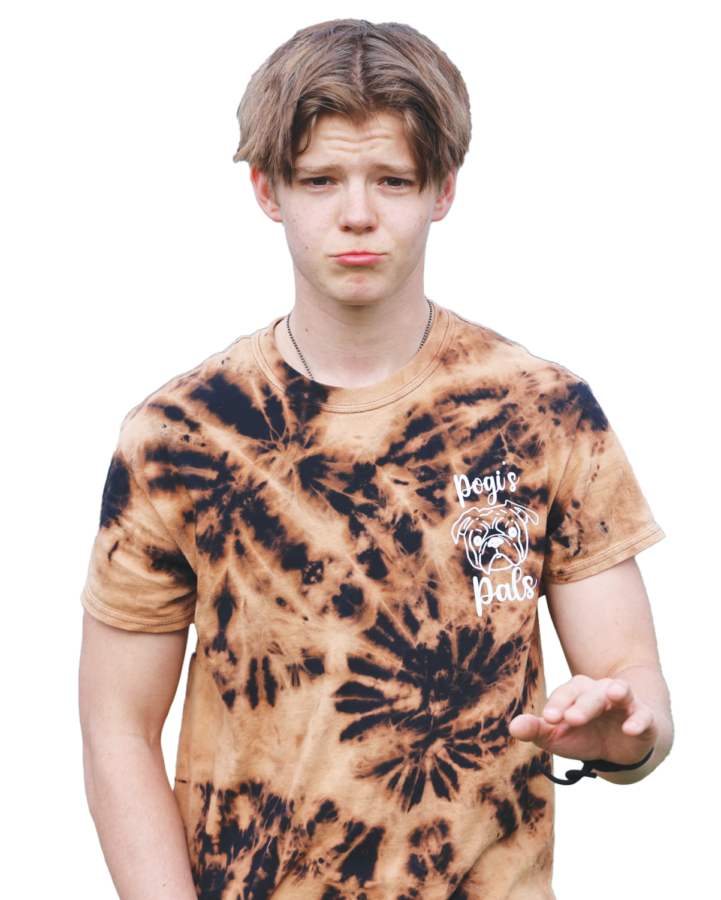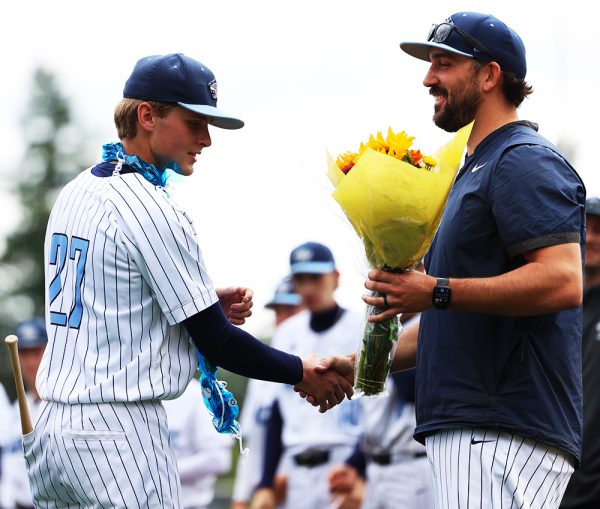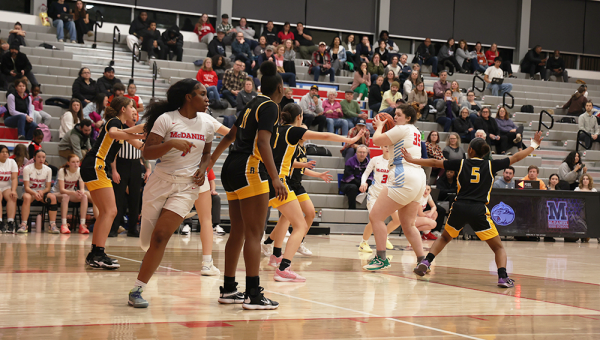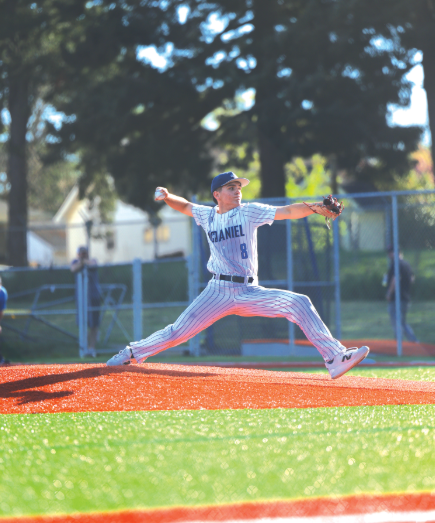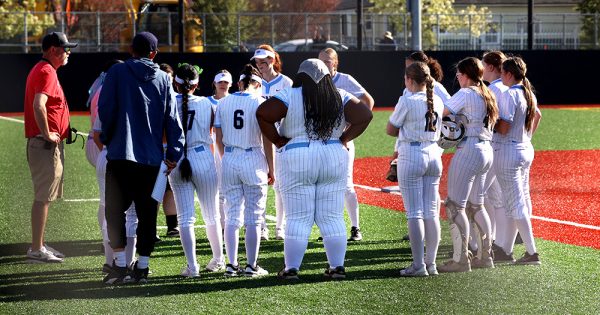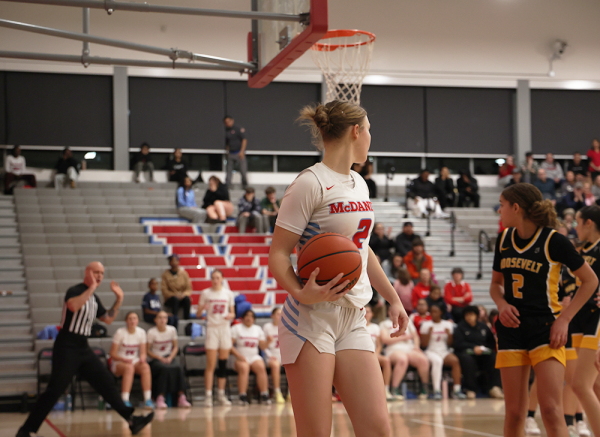Persevering through the pain
Junior Jake Brewer laments his hurt finger. Brewer reinjured this finger and is now working through it.
For many athletes, injuries are simply a part of playing. Pushing through and recovering is a constant battle in order to continue participating in their sport of choice.
Sometimes, pushing oneself too far can cause injuries to worsen and prolong the recovery process.
Sophomore Max Kilburn, a wrestler and football player, has dealt with a host of injuries in the past year, including a torn plate in his foot. Kilburn didn’t even know what injury he had until much later in the year because he tried to ignore it for so long.
“They [coaches] never really forced me to keep going, I was just like ‘Nah, I’m alright,’” Kilburn explained.
Kilburn hid the severity of the injury so that he could keep playing.
“There were points where it was so painful I couldn’t sleep,” Kilburn said.
He noted that sometimes people pressure themselves to continue playing to meet the expectations of their coaches, but there is also a culture among young athletes that playing through injuries is cool.
“I think a lot of it is like the athlete thinking they’re really bad*ss, and really they’re not,” Kilburn commented. “It’s not ‘cool’ to be injured.”
Jake Brewer is a junior who participates in track, wrestling, football and basketball. He agreed that there is a tendency to pressure oneself in athletics.
“I feel like I pressure myself, like sometimes I hide my injuries to push myself further and actually to perform to like what expectations [coaches] have of me,” Brewer said.
He also mentioned that he often waits for injuries to heal on their own rather than getting professional care.
“Basketball season, I injured my finger and the nail fell off cause I jammed it really hard, so I had to wait for that to regrow. I didn’t go to urgent care for it, I just put a
splint on it,” Brewer explained.
This came back to hurt him later when he broke the same finger with far more severity.
“Freshman year I went for a tackle, and I jammed my finger again on this guy’s jersey, and it went all sideways. I didn’t look at it, and I just pushed it back in. Now I can’t really feel the end of it but—it’s fine,” Brewer said.
Junior Brandon Kyle is well-experienced in persevering through injuries. In June 2022, he broke his scaphoid–a bone in the wrist–skating. He was still doing summer football workouts despite the injury.
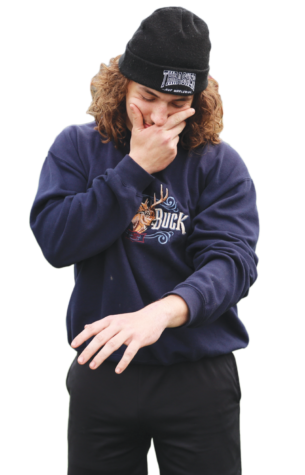
“I thought it was just sprained for a long time and just kept wrapping it up,” Kyle explained. “It kinda felt like a knife was just getting stabbed into my wrist all the time…I just kept working through it, working through it.”
Even when he got the news it was broken, he wanted to keep playing.
“I found out it was broken the day of a Grant game, like two hours before, and I was kinda mad cause my mom wouldn’t let me play and I wasn’t too stressed about it getting hurt,” Kyle said.
For Duy Bui, an assistant distance track coach, the most difficult part of injuries isn’t the physical aspect of things—it’s the toll it takes on an athlete’s mental health.
“The biggest part about injuries that is the toughest is the mental part. The physical part, injuries do eventually get better, but after that athletes usually get in their heads about it the most, and I feel like as a coach, I really need to help them mentally with that,” Bui explained. “The stronger the mental aspect, the stronger the athlete is cause I know athletes tend to be too hard on themselves cause they can’t replicate what they’ve done before. That’s why it’s important to bring up the athlete mentally so that they can have faith in themselves and keep on progressing.”
For Kyle, taking time off to heal his injuries was not in the cards. He got surgery in December and had a few weeks with a cast followed by months of physical therapy.
“It didn’t feel too long ‘cause I kept working out through it, like lifting and stuff . I wasn’t really supposed to, but I just kept lifting…it never hurt too bad,” Kyle said.
Some people also delay getting medical care for other reasons.
“People can’t pay for treatment so they’re stuck with it…of course we have the student health center and Noah, and that’s cool and all, but they can’t give you surgery,” Kilburn pointed out.
Brewer, Kilburn and Kyle all utilized our athletic trainer, Noah DeLisle, at some point during their injuries. But according to Brewer, DeLisle isn’t enough.
“I think we need another trainer cause Noah has a lot on his plate all the time with a bunch of people coming to him, especially during track season,” Brewer noted.
Injuries may be unavoidable to some extent, but Bui also emphasized the importance of preventative measures.
“There are things that athletes have to do and need to do,” Bui said. “Have to do is going to practice every day, making sure their grades are
stable. Need to do is the extra stuff like icing, stretching. And there needs to be a stronger emphasis on that part because that really helps an athlete accumulate the athleticism they need and the injury prevention that they need.”
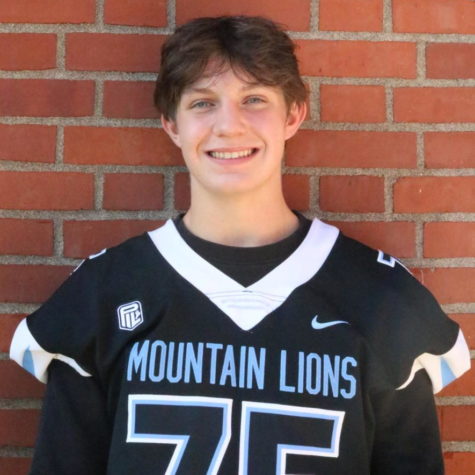
Lane is a senior, and he is passionate about wrestling, transit access and oxford commas. People describe him as intense, driven and hungry. He likes being a journalist because he can shed light on controversial issues and bring the voices of marginalized communities into the spotlight.


